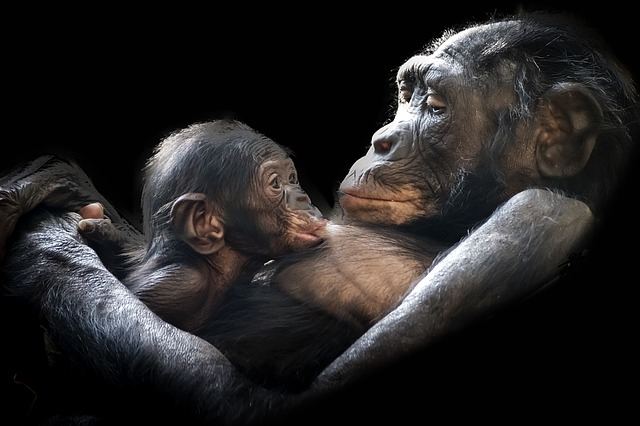
The contrast between sclerae, the white outer layer of human eyeball and the colourful irises allow others to detect the direction of gaze, which is believed as a uniquely human ability. But when it comes to apes, their eyes are often darker than human eyes and their gaze is 'cryptic', or hidden, which means apes can not follow each other's gaze.
But recently researchers from NUS Biological Sciences in collaboration with the University of St Andrews and Leiden University studied this angle and discovered that the eyes of apes possess the same pattern of colour differences as human beings, which means the opposite to what experts previously thought.
Doctoral student Juan O. Perea-García and Associate Professor Antónia Monteiro suggest that this new study may mean apes also follow each other's gaze.
To conduct the study the team compared the darkness of the sclerae contrasted with irises of over 150 humans, bonobos and chimpanzees.
The findings, which were published in Proceedings of the National Academy of Sciences of the United States of America (PNAS) also showed that chimpanzees have a different pattern, with very dark sclerae and paler irises, while bonobos, like humans, have paler sclerae and darker irises.

The researchers have mentioned that both these colour patterns show the same type of contrast seen in human eyes and could help other apes find out where they are looking.
As per Perea-García, modern humans are unique in many ways as no other animals can use communication methods or tools.
"Gaze following is an important component of many behaviours that are thought to be characteristically human, so our findings suggest that apes might also engage in these behaviours," he added.
It should be known that before the invention of communication through human language, ancestors of humans might have used the gaze of those around them to help communicate dangers or other useful information. They might not have uttered any word to warn people around them, as a look in the direction of the predator might be sufficient, as long as it was possible to follow the direction of the gaze.
While seeking answers as to how the ancestors of humans communicated in ancient days, this study helped researchers to look into some interesting new research directions which include questions pertaining to why human beings and bonobos evolve in a similar way.
In addition to this, Perea-García said, "We know that some gorillas and orangutans have eye colouration like our own and some members of these species have eye colouration similar to the chimpanzees."
"But why is there this variation within a species?" He further mentioned while adding that currently the team of researchers are working with several zoos to find out more.









